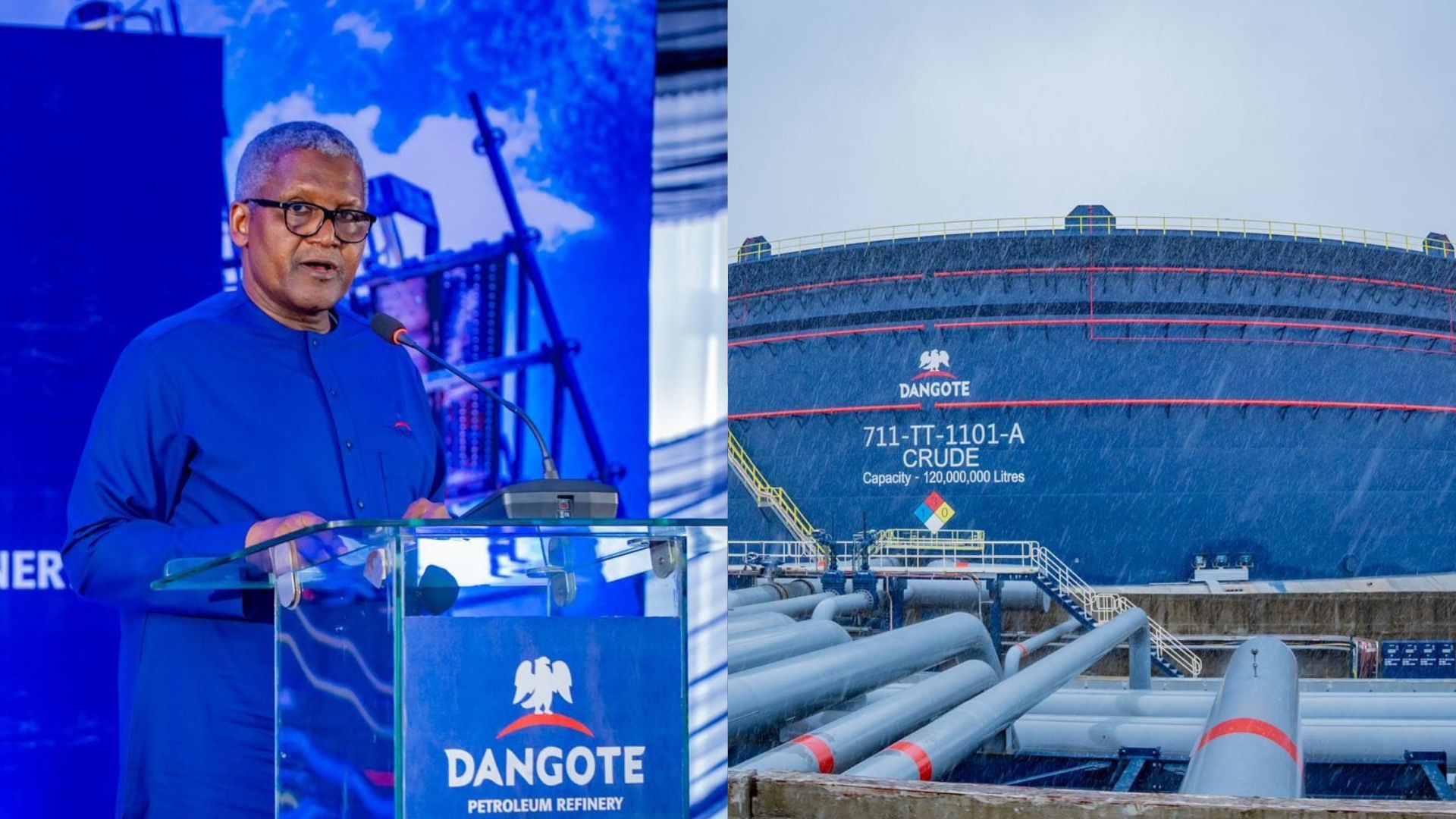
The Dangote Refinery, a monumental project by the Dangote Group, is one of the most ambitious industrial developments in Africa. Located in the Lekki Free Trade Zone, Lagos, Nigeria, it is the largest single-train refinery in the world and has the potential to revolutionize the continent’s energy landscape.
Designed to reduce Nigeria’s dependence on imported petroleum products and create thousands of jobs, the refinery is a game-changer for Africa’s economy. This article provides an in-depth look at everything you need to know about Dangote Refinery, from its inception and construction to its economic impact and future prospects.
1. Overview of the Dangote Refinery
The Dangote Refinery is a 650,000 barrels per day (bpd) integrated oil refining and petrochemical complex. It is designed to meet Nigeria’s domestic fuel demand and export refined products to international markets. The project, spearheaded by Aliko Dangote, Africa’s richest man, is expected to transform Nigeria into a net exporter of refined petroleum products.
Key Features:
- Capacity: 650,000 barrels per day
- Location: Lekki Free Trade Zone, Lagos, Nigeria
- Investment: Estimated at over $19 billion
- Land Area: Covers approximately 2,635 hectares
- Technology: Uses state-of-the-art single-train refining technology
- Products: Petrol, diesel, aviation fuel, polypropylene, and other refined products
2. The Vision Behind Dangote Refinery
The refinery was conceived to address the persistent fuel shortages and heavy reliance on imported petroleum products in Nigeria. Despite being one of the largest crude oil producers in Africa, Nigeria has struggled with refining capacity, leading to high importation costs and economic inefficiencies.
Objectives of the Refinery:
- Self-Sufficiency in Petroleum Products: Reduce Nigeria’s reliance on imported fuel.
- Job Creation: Provide employment opportunities for thousands of Nigerians.
- Economic Growth: Stimulate industrialization and local manufacturing.
- Foreign Exchange Savings: Cut down on forex expenditure for fuel imports.
- Regional Export Hub: Supply refined petroleum products to other African nations.
3. Construction and Development
The Dangote Refinery’s construction was one of the largest engineering projects in Africa. The project faced several challenges, including delays in obtaining permits, infrastructure development, and logistical issues.
Construction Timeline:
- 2013: Conceptualization and initial planning begin.
- 2016: Groundbreaking ceremony and start of construction.
- 2017-2020: Procurement of equipment and site development.
- 2021-2022: Major installations and infrastructure completion.
- 2023-2024: Final testing and commissioning.
The refinery was designed by world-renowned engineering firms and uses cutting-edge technology to maximize efficiency and minimize environmental impact.
4. Economic Impact of the Dangote Refinery
The refinery is expected to have a significant impact on Nigeria’s economy and beyond.
Job Creation:
- Over 100,000 direct and indirect jobs created during the construction phase.
- Thousands of permanent jobs expected in operations, logistics, and management.
- Boost to ancillary industries such as transportation, storage, and retail.
Reduction in Fuel Imports:
Nigeria spends billions of dollars annually on fuel imports. With the refinery’s full operation, the country can save over $10 billion per year in foreign exchange.
Revenue Generation:
The refinery is projected to generate billions in revenue through:
- Domestic sales of refined products.
- Exports to regional and international markets.
- Tax contributions to the Nigerian government.
5. Products and Output of the Refinery
The Dangote Refinery is set to produce a variety of petroleum products essential for Nigeria and international markets.
Key Products:
- Petrol (Gasoline): The primary fuel for vehicles and generators.
- Diesel: Used in transportation, power generation, and industries.
- Aviation Fuel: Essential for Nigeria’s aviation sector.
- Liquefied Petroleum Gas (LPG): Used for cooking and heating.
- Polypropylene: A key raw material for plastics and manufacturing industries.
With its large capacity, the refinery aims to supply all of Nigeria’s fuel needs while exporting surplus products to neighboring African countries and beyond.
6. Challenges and Controversies
Despite its potential benefits, the Dangote Refinery has faced several challenges:
Funding and Cost Overruns:
- The initial budget was around $9 billion, but costs escalated to over $19 billion due to construction delays, global economic downturns, and rising material costs.
Regulatory Hurdles:
- Obtaining necessary government approvals and navigating Nigeria’s complex regulatory framework posed challenges.
Infrastructure and Logistics:
- The lack of adequate roads, pipelines, and power supply in the Lekki area required additional investments to support the refinery’s operations.
Market Concerns:
- There were concerns about whether Nigeria’s existing fuel subsidy structure would affect the refinery’s profitability.
7. Potential Benefits for Nigeria and Africa
The Dangote Refinery has the potential to reshape Africa’s energy sector by:
- Enhancing energy security for Nigeria and West Africa.
- Reducing dependency on European and American fuel imports.
- Promoting industrialization through the supply of petrochemical raw materials.
- Strengthening Nigeria’s economy by stabilizing fuel prices and reducing inflation.
8. Future Prospects and Expansion Plans
Dangote Group has hinted at potential expansions and future projects, including:
- Additional petrochemical plants to produce more industrial chemicals.
- Investments in renewable energy to complement its refining operations.
- Partnerships with international energy companies to enhance production efficiency.
Conclusion
The Dangote Refinery is a landmark project that holds immense promise for Nigeria and Africa. As the largest single-train refinery in the world, it is expected to transform Nigeria from a fuel-importing nation to a major exporter of refined petroleum products. Despite challenges in construction and regulatory approvals, the refinery’s benefits far outweigh the hurdles. By enhancing energy security, creating jobs, and boosting economic growth, Dangote Refinery is set to leave a lasting impact on the continent’s energy landscape.
With full-scale operations expected to commence soon, all eyes remain on this mega-project and its potential to reshape Nigeria’s future. As Africa’s largest private-sector investment, the Dangote Refinery is not just an industrial achievement but also a testament to the power of visionary entrepreneurship and innovation.






